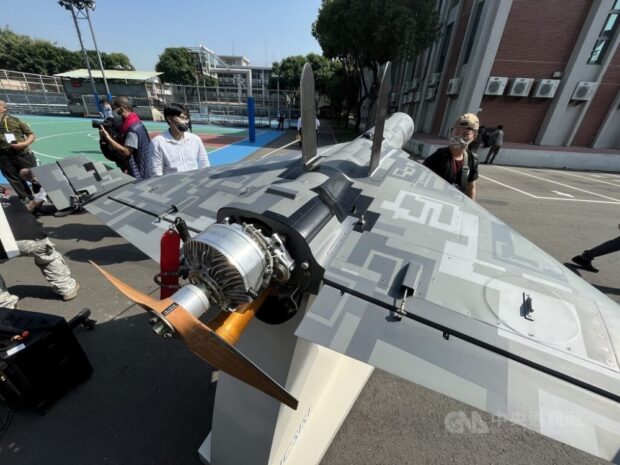A Taiwan top military research unit will unveil a series of domestically made attack drones in Taichung Tuesday, including a loitering munition similar to the United States’ AeroVironment Switchblade 300, a source told CNA.
According to the unnamed source, the National Chung-Shan Institute of Science and Technology (NCSIST) will unveil a series of drones, including the Albatross medium unmanned aerial vehicle no. 1 and 2, indigenous unmanned combat aerial vehicle (UCAV) Teng Yun 2 and Cardinal 2 and 3, latest members of a family of small unmanned aerial vehicles, on Tuesday in NCSIST’s Taichung branch.
The institute will also unveil a domestically made “kamikaze” drone, which the source said was inspired by the AeroVironment Switchblade 300 employed by Ukrainian forces in the country’s war with Russia.
The loitering munition has a range of 10 kilometers, can fly for 15 minutes and can fit inside rucksack, according to the source.
Aside from these military-grade drones, the NCSIST is working closely with the private sector to develop unmanned aviation vehicles (UAVs) for military use in the hope of building a “UAV fleet” next year.
The NCSIST announced last month that it has partnered with private companies to build prototypes of commercial-grade carrier-launched UAVs, land-based surveillance UAVs, drones with target-acquisition capabilities, surveillance UAVs, and miniature UAVs.
The rationale behind adopting commercial-grade drones for military purposes was to have them available for basic non-
combat surveillance more quickly, according to Chi Li-pin (齊立平), head of the NCSIST’s Aeronautical Systems Research Division, in a Feb. 7 press event.
While developing military-grade UAVs is a lengthy process that can take four to five years because of the military’s many requirements, commercial-grade UAVs can pass related tests and begin conducting military surveillance missions in about a year, Chi said.
Based on the current plan, he said that the prototypes for the five kinds of UAVs are expected to be delivered to the NCSIST by July 31 this year as scheduled.
The NCSIST will be responsible for testing them and assisting private manufacturers. Once the drones pass the required tests, mass production could begin next year, according to Chi.
Photo: Chien Hsiang (劍翔) “suicide drone.” CNA file photo
Source: Focus Taiwan

